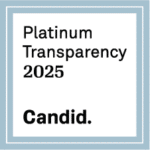In many ways, the COVID-19 crisis is one of equity. Those who were more at-risk at the beginning of the crisis have fewer safety nets, less support, and more profound challenges. Many nonprofits positioned to support these at-risk groups also face those same barriers.
Data has now confirmed the unequal impact of the virus on vulnerable communities. A comprehensive response requires examining the racial structure and systemic barriers that existed before the crisis and consistently worsening outcomes at this moment. While a rapid response is needed, how can donors and families build an approach for long-term recovery with an equity lens? It likely starts with an understanding of racism and putting equity at the center of COVID-19 relief.
The practice of equity requires donors to recognize that people are not starting from the same place in life. Look at the above image. The inequity is not inherent to the individual. Rather, the inequity is in the context, i.e., the historical and present-day systems of oppression.
The fence represents the evolution of these systems of oppression into the present-day. Sharing how the challenges continue to increase, and without proper support, people will fall behind. The fence could be the school-to-prison-pipeline. In this pipeline, African American, Native-American, and Latinx children are disproportionately suspended and funneled out of school, eventually into juvenile and criminal justice systems at higher rates than their white classmates. Combined, the systems of oppression that have infiltrated our country for years, this compounding effect is a difficult hole to climb out if one does not have different opportunities and support (i.e., when inequity is in play).
In the philanthropy world, we need courageous leadership with a steadfast commitment to tackling these issues of inequity head-on.
Today we can attempt to tackle COVID-19 relief with an equity lens instead of just an equal one– knowing that the African American population is most sensitive to this virus. Remember, even the most well-intentioned approaches are still subject to another hurdle: bias.
Serving others calls us to account for the complex systems within which we work and how they became so inequitable and unjust. If you first seek to understand and learn about the systems of oppression or the inequities of a situation (like COVID-19), then you, as a donor, can begin to build more impact and better futures for all persons.





